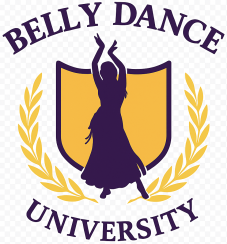Update 10/24/2025
When I talk with students about style labels, “American Cabaret” (often shortened to AmCab) comes up a lot. This style grew in the U.S. around the 1960s-80s and it developed its own look: a mix of Middle Eastern movements, western showmanship, veils, floor-work, finger cymbals and big costume moments. Greenstone Dance Arts & Siobhan Camille+1
In my studio in Port St. Lucie I sometimes ask students: How does this feel different from the Egyptian style you’ve also studied? In practice you’ll find AmCab often uses a more upright posture, more dramatic costume effects, floor-work and theatrical props (like swords, candles, veils) as standard. Greenstone Dance Arts & Siobhan Camille+1
Is it “authentic”? Well, yes and no. It’s authentic as a U.S. born version of belly dance — it reflects the history of American club and restaurant belly dance, the mixing of Turkish, Egyptian, Arab and western influences. It is less a revival of one specific traditional form and more a theatrical performance-style built for stage and audience. In that sense, it stands on its own. It is also the most widely used form for topless belly dancing.
Key characteristics & how it differs from other styles
Here are some traits I teach when we explore American Cabaret style — they’ll help you see and feel the difference.
Entrance and structure
In AmCab performance you’ll often see an entrance wrapped in veil or cape, then a lively or dramatic opening number. Then slower work with veil, floor segments, drum solos, props. Costuming gets big. Music may shift genres or borrow from Turkish or Egyptian suites but is often arranged for show. Bellydance.com+1
Movement and posture
Compared with some other styles (for example more “traditional” Egyptian Raqs Sharqi) AmCab tends to use more upright stance, pointed toes, dramatic arm and hand lines, more theatrical travel. One blog pointed out that Egyptians often keep heels down and use core-driven hip work, whereas AmCab may use heavier arm isolations and shapes. Greenstone Dance Arts & Siobhan Camille
Costume and props
In AmCab you’ll frequently see big circle skirts split high in front, lots of fringe or coins, heavy belts, bra sets with sequins or rhinestones, veils used for entrance or effect, floor work in stage settings, finger cymbals (zills) pretty much standard. Props like sword, candle tray, cane can be part of the set. Bellydance.com
Feel and purpose
AmCab often aims to entertain loud, visually, theatrically. It’s about presence, movement and spectacle. That doesn’t mean it’s shallow — far from it — but the aim is different. When I teach students I ask: Does this move land for the audience? Does the costume, the entry, the veil, the floor work combine into a story? If yes — you’re leaning into AmCab. If you’re filming a club set in the U.S., chances are AmCab style is exactly the language you’ll use.
What this style offers you
If you choose to work in American Cabaret style, you’re joining a tradition of show dancers who’ve learned to master stage presence, props, dynamic wardrobe and audience interaction. It gives you freedom — to mix, to travel, to grab attention — but also invites you to rehearse seriously. You’ll need to plan your entrance, your travel, your floor work, your audience sightlines. When you practise, imagine the lights, the stage fringe, the veil swirling, the cymbals glinting. That image helps your body meet the style.
If you’re teaching beginners or building a nightclub set, AmCab gives you a template: entrance → hook → floor segment (or second number) → climax → exit. Use it as a spine. And as always, your own personality fills in the gaps. The style is yours to inhabit.
